We Got AI To Analyse 10 Of The Most Famous Ghost Photos Of All Time


Lord Combermere
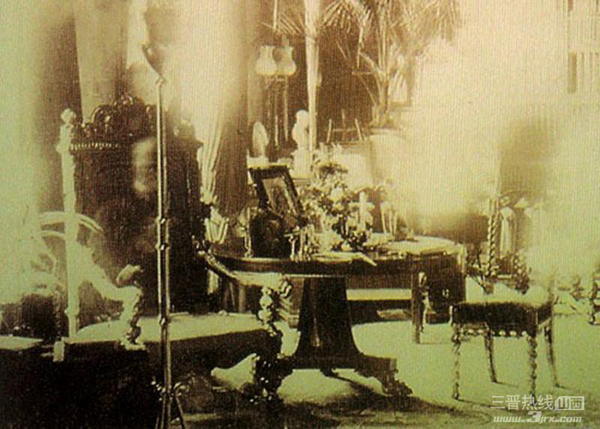


The photograph you've provided appears to show a faint figure sitting in a chair. When analyzing such photographs, there are several rational explanations one could consider:
Long Exposure: During the late 19th century, the photographic process required long exposure times, often several minutes. If someone were to sit in the chair briefly and then move, this could result in a transparent, ghostly image on the final photograph.
Double Exposure: This is a photographic effect that results from exposing the film twice to create two superimposed images. If the film inside the camera was accidentally exposed twice, once with a person present and once without, it could create a translucent figure.
Hoax: There's always the possibility that the photograph was intentionally altered to create a sensational image. This could be done by staging the scene or manipulating the photographic plate.
The likelihood of the photo being genuinely paranormal is something that cannot be definitively determined. Photography from that era had many limitations and susceptibilities to artifacts that modern technology does not. While it's intriguing to consider the possibility of a ghost, it is also crucial to approach such claims with a degree of skepticism and an understanding of historical photographic methods. Without definitive proof, the photo remains a curious piece of paranormal lore, open to interpretation.
Walk With A Ghost



For this image, there are a few possible non-paranormal explanations:
Motion Blur: If a person was walking behind the subjects and the mobile phone's camera had a slow shutter speed, especially in low light conditions, it could capture a blurry, translucent figure moving across the frame.
Camera Quality: In 2000, mobile phone cameras were of much lower quality than today's standards. Low resolution and sensitivity to movement could easily result in distorted images, particularly in low-light conditions.
Photobombing: A person could have unintentionally walked into the frame as the photo was taken. Given the slow camera speeds of early mobile phones, this could result in a semi-transparent figure if the person was moving quickly.
As for the likelihood of the photo being genuinely paranormal, it's worth considering the more mundane explanations first. Technological limitations of the time often account for such anomalies in photos. While it's impossible to completely rule out a paranormal explanation without more context, the quality and conditions under which the photo was taken suggest there are plausible rational explanations.
Ghostly Farm Hand
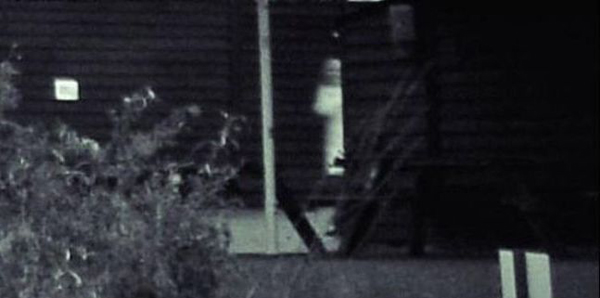


In the photograph we see an image that suggests the presence of a young child near one of the farm buildings. Several rational explanations could be considered for this image:
Pareidolia: This is a psychological phenomenon where the mind perceives a familiar pattern, like a face, where none actually exists. It's common for people to see faces in inanimate objects or patterns of light and shadow.
Reflections and Refractions: Depending on the angle and the light, reflections from windows or other shiny surfaces can sometimes create ghostly images that appear to be something else.
Actual Children: It's also possible that a real child was present when the photo was taken, and the photographer didn't notice them. This can happen if the child moved quickly in and out of the frame during the snapshot.
Hoax: It's always necessary to consider the possibility of a hoax, where the image has been deliberately manipulated or staged to create the appearance of a ghost.
The owner's confirmation that they've witnessed the ghost of a boy before adds an anecdotal layer to the story, but without further evidence, it's hard to say definitively whether the photo is paranormal. Anecdotal accounts are compelling but not verifiable proof. Given that there are several potential rational explanations, and without further evidence to support the paranormal claim, the likelihood remains speculative.
Ghost Of Grandpa
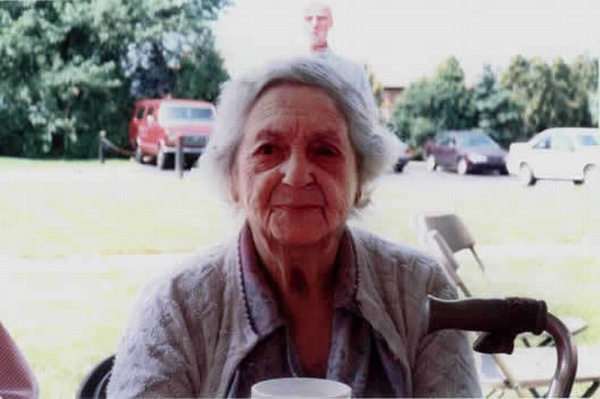


The photo you've presented is certainly intriguing. Here are some possible explanations for this image:
Double Exposure: Even if the photo was taken with a modern digital camera, it could be a case of double exposure, either accidental or as a result of image processing errors.
Image Manipulation: With the advent of digital photography, it's become increasingly easy to manipulate images. The figure in the background could have been added after the photo was taken, either intentionally or as part of a mistaken editing process.
Optical Illusion: Sometimes, what appears to be a ghostly figure can be an illusion created by the combination of light, shadow, and the surrounding environment, creating a shape that our brain interprets as a human figure.
Pareidolia: Similar to the previous image, this psychological phenomenon could cause the viewer to perceive the vague shape behind the grandmother as a human figure, particularly if there is an emotional predisposition to see a deceased loved one.
Misidentification: It's also possible that there was another person present who bore a resemblance to the grandfather, and the family's emotional state led them to identify this person as the deceased relative.
Based on the photograph and common occurrences in photography, the most likely explanation could be a combination of pareidolia and misidentification. The human brain is wired to recognize faces and familiar figures, which is the essence of pareidolia. Given the emotional significance of the figures involved, the family members could be more inclined to see the grandfather's image.
Misidentification is also a strong possibility, as the shape and features that resemble the grandfather might actually be another person present or an object in the background that the mind interprets as a human figure due to its outline and positioning.
While it is tempting to lean towards a paranormal explanation, especially given the emotional context and timing after the grandmother's passing, these psychological and perceptual phenomena often provide rational explanations for such occurrences in photographs. Without further evidence to suggest a supernatural element, these natural cognitive processes are often the most likely causes for such sightings in images.
Freddy Jackson
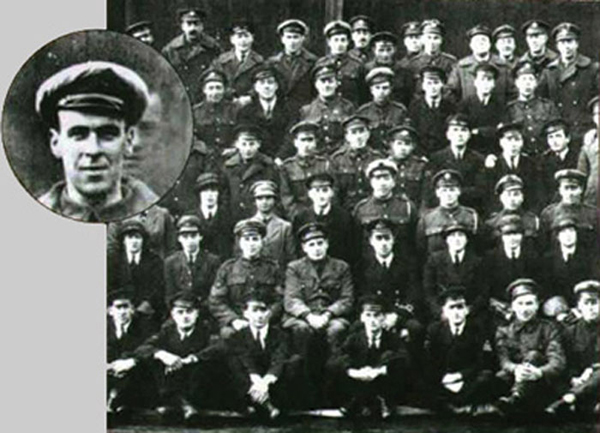


This photo is a classic example often cited in discussions of alleged ghost sightings. Here's a breakdown of the most likely explanations:
Double Exposure or Printing Error: Given the era's photographic technology, double exposure could occur during the initial photo shoot or during the development process. This would allow for an overlay of two images, potentially creating the ghostly visage.
Optical Illusion or Pareidolia: As with other images, our brains may be creating a face where there is none, especially if we are told beforehand what to look for.
Misidentification: The 'ghost' face might actually be a living person who bears a resemblance to the deceased Freddy Jackson. The power of suggestion could lead observers to connect the face to Jackson, especially knowing the backstory.
Photographic Artifact: Imperfections in the photographic plate or film, or during the development process, could also account for additional figures or anomalies that weren't actually present.
Hoax: It's also within the realm of possibility that the image was altered after the fact to add the face of Freddy Jackson, either for a bit of dark humor or to create a sensational story.
The most likely explanation could be double exposure or a printing error. The photographic techniques of the time were prone to such anomalies, particularly in group photos where the exposure would be longer, increasing the chance of errors or overlays. Given the timing of the supposed apparition of Freddy Jackson soon after his death, it's understandable why those who knew him might interpret such an anomaly as his ghost. However, a technical glitch in the photography process remains a more plausible explanation given what we know about early 20th-century photography.
The Tulip Staircase Ghost



The photograph seems to show a shadowy figure ascending the stairs, and is another fascinating image. Here are some possible explanations for this photograph:
Long Exposure: Similar to earlier photographs, if the exposure time was long and someone walked up the stairs without lingering in one spot for too long, they might appear as a transparent, ghostly figure.
Lighting and Shadows: The interplay between light and shadow in a photograph can sometimes produce shapes and figures that were not intentionally captured. This effect can be especially pronounced in a setting with strong contrasts, such as a staircase with a direct light source.
Photographic Defects: Anomalies in the film or errors during the development process can sometimes produce unexpected figures and shapes in the photograph.
Illusion of Motion: The image could be an optical illusion where the pattern of the staircase, combined with the camera's movement or other environmental factors, creates the impression of a figure moving.
Hoax: Although we must consider this possibility, there is no direct evidence to suggest that the priest intended to deceive. Nonetheless, it remains a potential explanation for any unusual photograph.
The likelihood of this photo capturing a genuine paranormal event remains a matter of personal belief and interpretation, as none of the explanations can be confirmed without additional evidence. Given the age of the photograph and the lack of corroborating evidence, it's challenging to draw a definitive conclusion. However, the explanations involving photographic techniques and optical illusions are often the first considerations when analyzing potentially supernatural images.
The Back Seat Ghost
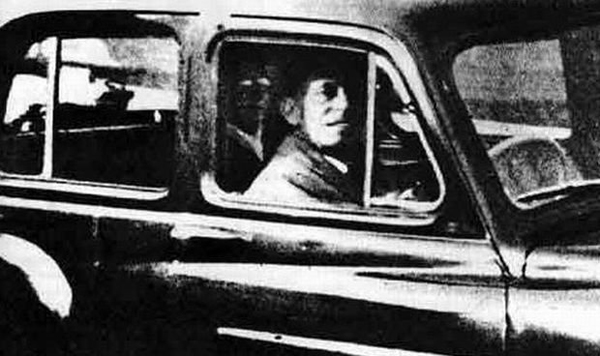


The photo you've shared reportedly shows an extra figure in the back seat which is claimed to resemble Mrs. Chinnery's mother. Considering the circumstances and the era in which the photo was taken, here are some plausible explanations:
Reflection: The figure might be a reflection on the window of the car. Reflections can often appear ghostly and translucent, depending on the angle of light and the clarity of the glass.
Double Exposure: As with other photographs of the time, if this was taken on a film camera, it is possible that the film had a double exposure, either from a previous photograph that wasn't wound properly or from an issue during the development process.
Seat Impression: An imprint or depression in the car seat could create the illusion of a figure, especially in black-and-white photos where shadows and highlights can appear more pronounced.
Another Passenger: It's also possible that there was indeed another person sitting in the car, possibly obscured or not noticed by Mrs. Chinnery at the time of taking the photo.
Photographic Artifact: Imperfections in the film or errors during the development process can sometimes produce figures and shapes.
Considering these options, the most likely explanations could be a reflection or a double exposure. However, the glowing eyes effect is less likely to be caused by double exposure, as this typically results in a more transparent image rather than one with glowing elements. Similarly, an actual passenger or a hoax would not necessarily produce glowing eyes unless other artificial means were employed.
Therefore, reflection and photographic artifacts seem to be the most plausible explanations for the specific details of the face and eyes in this photograph. Both are common occurrences in photography and can produce results that might be mistaken for paranormal activity, especially when emotions are involved, such as visiting a relative's grave.
The Ghost Of Boothill Cemetery
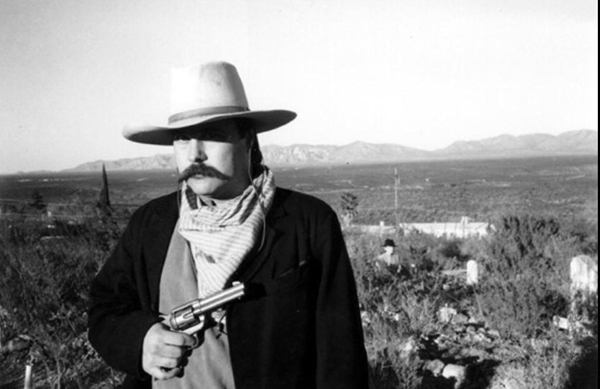


The image in the background of the photograph appears to be a human figure situated among the gravestones. It's not clear due to the figure's faintness, but it seems to be someone in a possible kneeling or stooped posture, given the relative proportions compared to the gravestones and the landscape. The figure's attire is not distinctly visible, and no clear facial features or expressions can be discerned from the image. It blends with the background, making it appear almost ghostly or ethereal within the setting of the graveyard.
Based on the figure appearing to be in a kneeling or stooped posture within the graveyard setting, here are some possibilities to consider:
Actual Person: The figure could be a real person who was present in the graveyard and not noticed by the photographer. They might be crouching or bending over a grave, which is common in cemetery settings.
Statuary or Grave Decoration: The figure could be a statue or a decorative element of a grave, which can often appear person-like, especially from a distance or at certain angles.
Photographic Anomaly: The image could be the result of a photographic anomaly where shadows, light, and the contours of the graveyard combine to create the illusion of a figure.
Plant or Tree: Sometimes plants, trees, or shrubbery can take on human-like shapes, especially in the uneven light conditions that can occur in outdoor photography.
Perspective and Focal Tricks: Due to the depth of field and perspective, objects closer to the camera in the background can appear larger or smaller than they actually are, possibly giving the impression of a figure that is kneeling or emerging from the ground.
These explanations consider both ordinary and optical illusion factors that could contribute to the appearance of the figure in the photograph. They rely on common occurrences in photography and human perception, particularly in complex environments like cemeteries, where there are many elements that could be misinterpreted as something else.
The Brown Lady Of Raynham Hall
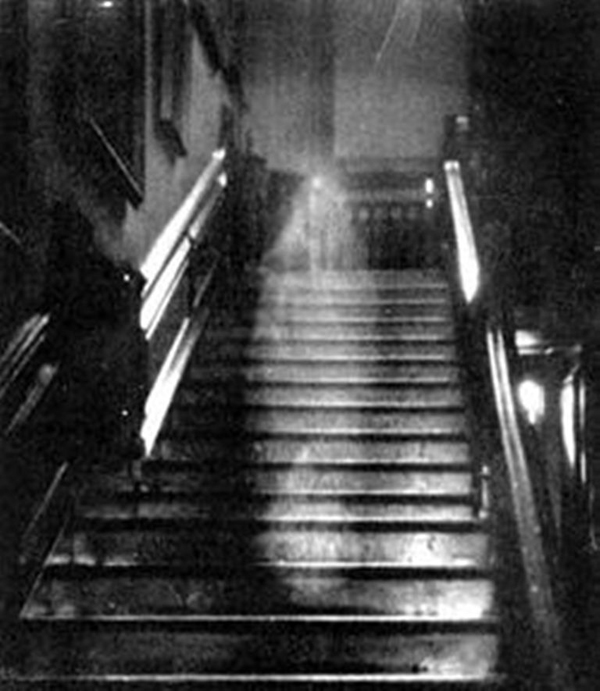


The image appears to show a staircase with a faint, ethereal figure visible on the steps. The figure seems to be semi-transparent and slightly glowing, with a humanoid shape that suggests an upright posture, possibly in motion as if climbing the stairs. This kind of image is characteristic of what many would describe as a "ghostly" appearance in paranormal photography. Here are some rational explanations:
Long Exposure: The figure could be the result of a person walking up or down the stairs during a long exposure shot. They would appear translucent if they did not stay in one place for the whole exposure.
Double Exposure: This could be a double exposure, where two images are superimposed over each other accidentally, creating the ghostly effect.
Light Refraction or Reflection: Sometimes light can play tricks when it reflects off surfaces or is refracted in certain ways, creating the illusion of figures.
Smear on Lens or Film Defect: Smudges on the camera's lens or defects in the film can create distortions that look like figures.
Dust Particles or Moisture: Dust or moisture caught in the flash of the camera can look like orbs or figures, especially if the camera is moved during exposure.
As for the likelihood of the photo being genuinely paranormal, it's essential to consider that there are many ways to inadvertently produce a ghost-like image with a camera, especially under low-light conditions or with older technology. The presence of a figure that resembles a traditional "ghost" does not necessarily indicate a paranormal event. Photographic anomalies are well-documented and often provide more likely explanations than paranormal ones. Without additional evidence, the photo remains an interesting piece of anecdotal evidence rather than conclusive proof of the paranormal.
Specter Of Newby Church
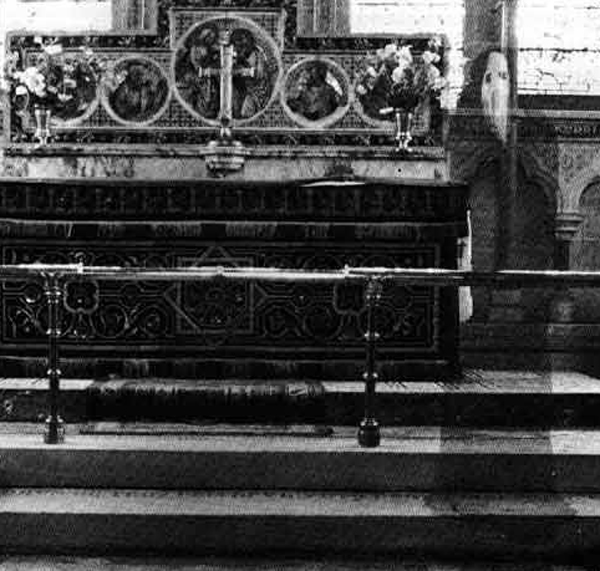


The image shows what appears to be a figure in a long, flowing robe or garment, standing to the right side near an altar or a similar ornate structure, possibly within a church or chapel. The figure seems to be partially transparent, with the lower part more defined than the upper, which fades into the background, giving it an ethereal appearance. Possible rational explanations for this image could include:
Long Exposure: As with other ghostly images, a long exposure could capture someone who was moving, making them appear transparent in the final photograph.
Double Exposure or Overlay: This could be an instance where two images have been superimposed, whether accidentally or intentionally.
Reflection: It might be a reflection from a shiny surface within the church that creates the illusion of a figure.
Low Light Artifacts: The photo seems to be taken in low light conditions, which can result in artifacts that digital sensors or film can misinterpret as shapes or figures.
Trick of Light and Shadow: In dimly lit interiors, especially those as complex as churches, the play of light through stained glass windows or other sources can create patterns that our brains interpret as figures.
The likelihood of this image being genuinely paranormal is again subject to interpretation. While it's compelling and creates a strong visual impression of a ghostly figure, the known issues with photography, especially in conditions of variable lighting like those found in churches, make it reasonable to first consider natural explanations. Without additional evidence to corroborate the supernatural, these natural explanations are often seen as more plausible.
Further Reading
Dive into the world of the paranormal and unexplained with books by Higgypop creator and writer Steve Higgins.

Hidden, Forbidden & Off-Limits
A journey through Britain's underground spaces, from nuclear bunkers to secret wartime sites.
Buy Now
Alone At The Inn
The full account of a solo paranormal investigation at the Ancient Ram Inn, tied to a documentary film.
Buy NowMore Like This

How To Make Your Own 'Ghostbusters' Action Figure Using AI

2024's Most Popular Paranormal Hotspots In The UK
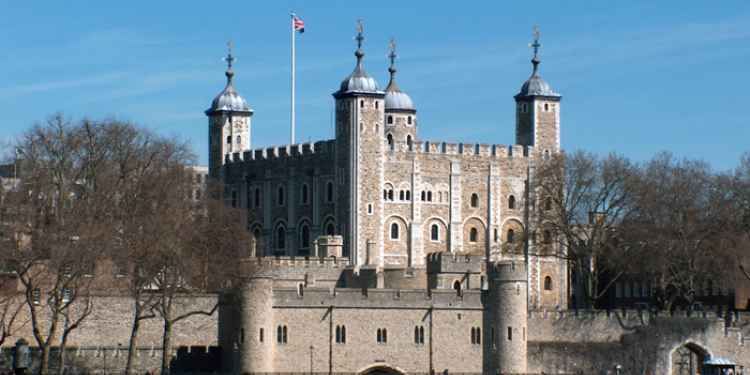
Can You Match These Famous Ghosts To Their Haunting Grounds?
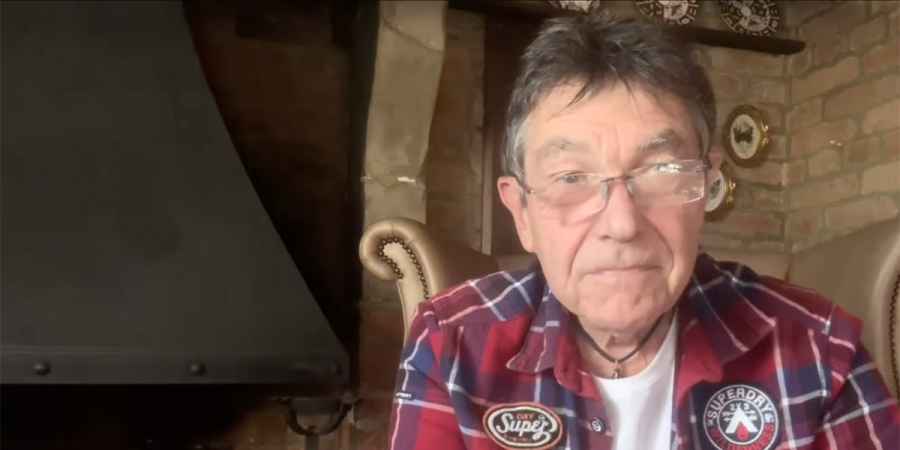
Richard Felix Shares A Collection Of Modern Ghost Stories For Halloween
 See More on Audible
See More on Audible
Comments
Want To Join The Conversation?
Sign in or create an account to leave a comment.
Sign In
Create Account
Account Settings
Be the first to comment.